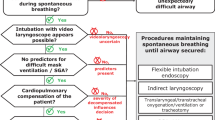Abstract
Laryngomalacia is the top cause of pediatric laryngeal wheeze. We used computational fluid dynamics to study the inspiratory airflow dynamics in severe pediatric laryngomalacia. Computed tomography was performed on the upper airways of two infants, one with severe laryngomalacia and one with normal airway, and 3D models were reconstructed. ANSYS CFD-POST software was used to simulate airflow in these models to compare the volumetric flow rate, flow velocity, pressure, wall shear, and vortex. The volume flow rate in the laryngomalacia model was significantly reduced compared with the control model. Under inspiratory pressures, the peak flow velocity, pressure, and shear force in the control model appeared at the soft palate stenosis, while that in the laryngomalacia model appeared at the supraglottis stenosis. In both models, the maximum flow velocity and shear force increased with decreasing inspiratory pressure, while the minimum pressure decreased with decreasing inspiratory pressure. In the control model, the airflow vortex appeared anteriorly below the posterior section of the soft palate. In the laryngomalacia model, the vortex appeared anteriorly below the posterior section of the soft palate and anteriorly below the vocal folds. Our methodology provides a new mechanistic understanding of pediatric laryngomalacia.










Similar content being viewed by others
References
Jackson C (1942) Diseases and injuries of the larynx: a textbook for students and practitioners. Macmillan
Wright CT, Goudy SL (2012) Congenital laryngomalacia: symptom duration and need for surgical intervention. Ann Otol Rhinol Laryngol 121(1):57–60
Isaac A, Zhang H, Soon SR et al (2016) A systematic review of the evidence on spontaneous resolution of laryngomalacia and its symptoms. J Pediatr Otorhinolaryngol 83:78–83
Frank-Ito DO, Schulz K, Vess G et al (2015) Changes in aerodynamics during vocal cord dysfunction. Comput Biol Med 57:116–22
Hu C, Han D, Zhou B et al (2017) Investigation of resectability degree for adenoidal surgery in OSA children with the method of comput ational fluid dynamics. Acta Otolaryngo l137(1):82–5
Islam MS, Paul G, Ong HX et al (2020) A Review of Respiratory Anatomical Development, Air Flow Characterization and Particle Deposition. Int J Environ Res Public Health 17(2)
Rios G, Morrison RJ, Song Y et al (2020) Computational Fluid Dynamics Analysis of Surgical Approaches to Bilateral Vocal Fold Immobility. Laryngoscope 130(2):E57-e64
Cheng T, Carpenter D, Cohen S et al (2018) Investigating the effects of laryngotracheal stenosis on upper airway aerodynamics. Laryngoscope 128(4):E141-e9
Tsega EG( (2018) Computational Fluid Dynamics Modeling of Respiratory Airflow in Tracheobronchial Airways of Infant, C hild, and Adult. Comput Math Methods Med 2018: 9603451
Farkhadnia F, Gorji TB, Gorji-Bandpy M (2016) Airflow, transport and regional deposition of aerosol particles during chronic bronchitis of human ce ntral airways. Australas Phys Eng Sci Med 39(1):43–58
Lin EL, Bock JM, Zdanski CJ et al (2018) Relationship between degree of obstruction and airflow limitation in subglottic stenosis. Laryngoscope 128(7):1551–7
Yang MM, Higano NS, Gunatilaka CC et al (2021) Subglottic Stenosis Position Affects Work of Breathing. Laryngoscope 131(4):E1220-e6
Gunatilaka CC, Higano NS, Hysinger EB et al (2020) Increased Work of Breathing due to Tracheomalacia in Neonates. Ann Am Thorac Soc 17(10):1247–56
Jeong SJ, Kim WS, Sung SJ (2007) Numerical investigation on the flow characteristics and aerodynamic force of the upper airway of patient with obstructive sleep apnea using computational fluid dynamics. Med Eng Phys 29(6):637–51
Sung SJ, Jeong SJ, Yu YS et al (2006) Customized three-dimensional computational fluid dynamics simulation of the upper airway of obstructive sleep apnea. Angle Orthod 76(5):791–9
Naseri A, Shaghaghian S, Abouali O et al (2017) Numerical investigation of transient transport and deposition of microparticles under unsteady inspir atory flow in human upper airways. Respir Physiol Neurobiol 244:56–72
Yanagisawa-Minami A, Sugiyama T, Iwasaki T et al (2020) Primary site identification in children with obstructive sleep apnea by computational fluid dynamics analysis of the upper airway. J Clin Sleep Med 16(3):431–9
Faizal WM, Ghazali NNN, Khor CY et al (2020) Computational fluid dynamics modelling of human upper airway: A review. Comput Methods Programs Biomed 196:105627
Zdanski C, Davis S, Hong Y et al (2016) Quantitative assessment of the upper airway in infants and children with subglottic stenosis. Laryngoscope 126(5):1225–1231
Luo H, Sin S, McDonough JM et al (2014) Computational fluid dynamics endpoints for assessment of adenotonsillectomy outcome in obese children with obstructive sleep apnea syndrome. J Biomech 47(10):2498–503
Funding
This research was funded by the Promotion Project of Medical Services and Security Capacity Supported by National Finance, and the Medical and Health Project of Guangxi Health Commission (Z20170351).
Author information
Authors and Affiliations
Corresponding authors
Ethics declarations
Disclosure statement
The authors declare no conflict of interest. The funders had no role in the design of the study; in the collection, analyses, or interpretation of data; in the writing of the manuscript, or in the decision to publish the results.
Ethical approval
The study was conducted in accordance with the Declaration of Helsinki and with the approval of the ethics committee of The People’s Hospital of Guangxi Zhuang Autonomous Region (KY-LW-2017-4) and parental consent.
Additional information
Publisher’s Note
Springer Nature remains neutral with regard to jurisdictional claims in published maps and institutional affiliations.
Rights and permissions
Springer Nature or its licensor holds exclusive rights to this article under a publishing agreement with the author(s) or other rightsholder(s); author self-archiving of the accepted manuscript version of this article is solely governed by the terms of such publishing agreement and applicable law.
About this article
Cite this article
Ye, L., Wei, J., Liang, Z. et al. Fluid dynamics of the upper airway in pediatric patients with severe laryngomalacia. Phys Eng Sci Med 45, 1083–1091 (2022). https://doi.org/10.1007/s13246-022-01174-8
Received:
Accepted:
Published:
Issue Date:
DOI: https://doi.org/10.1007/s13246-022-01174-8




